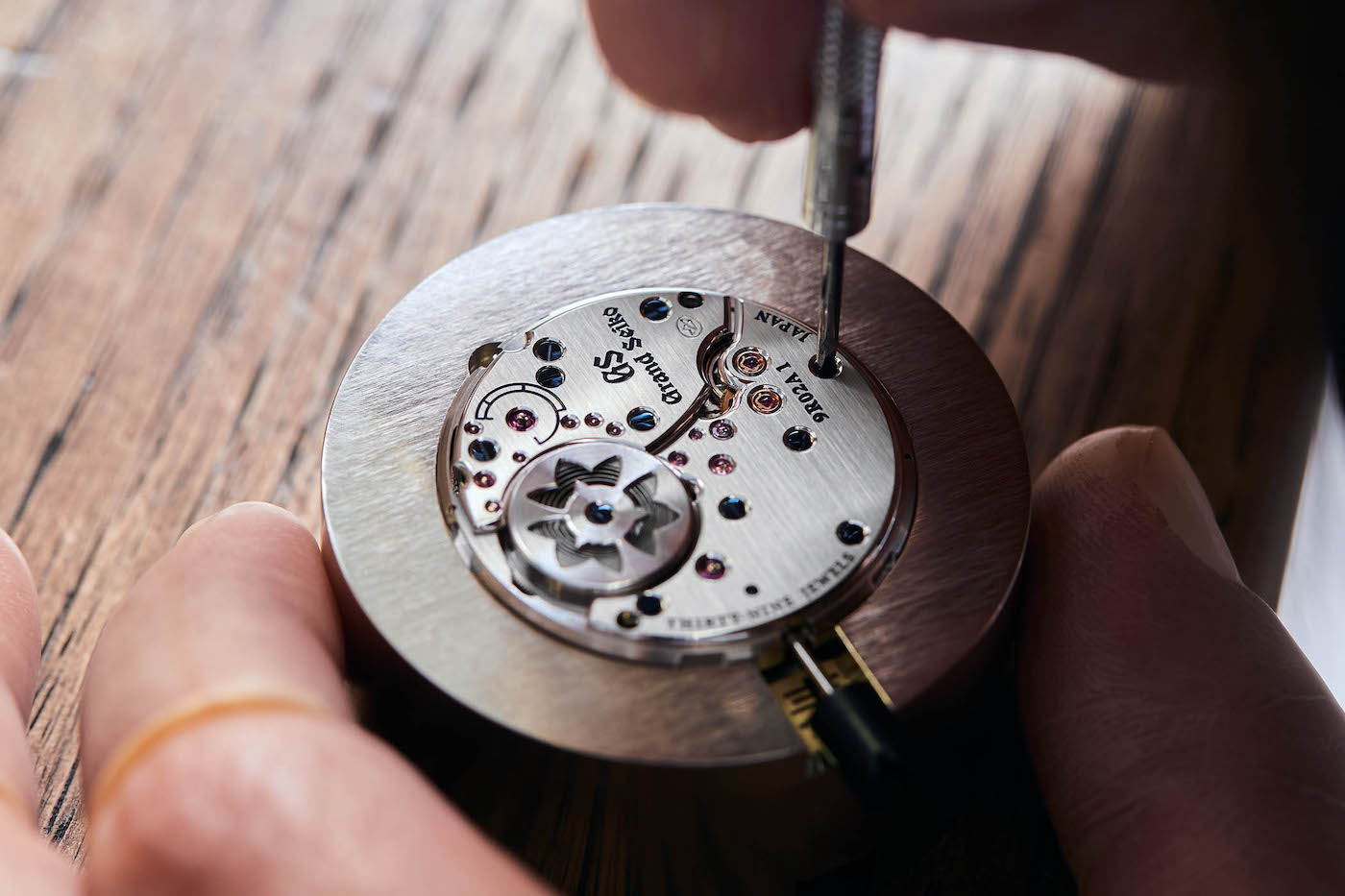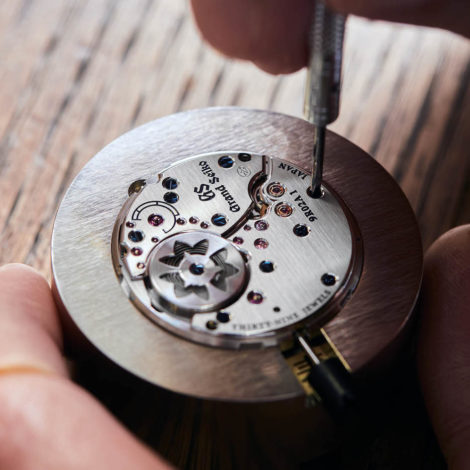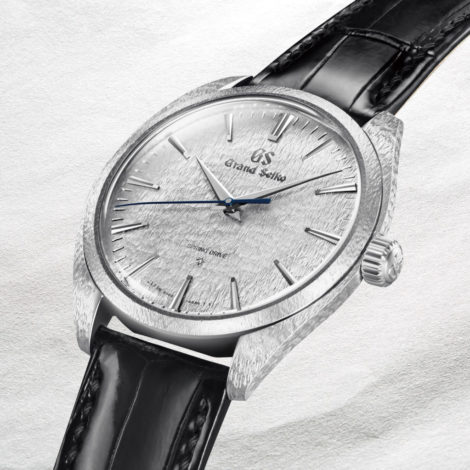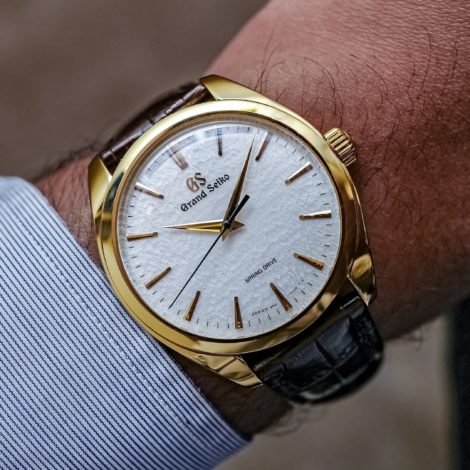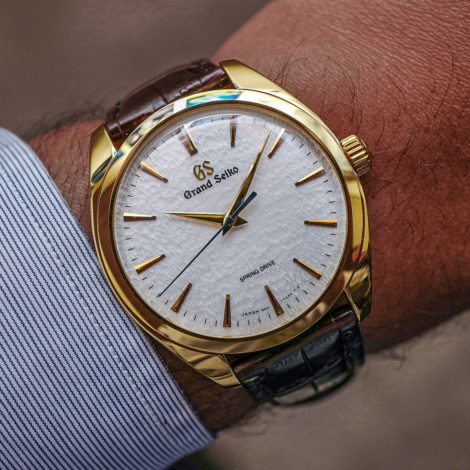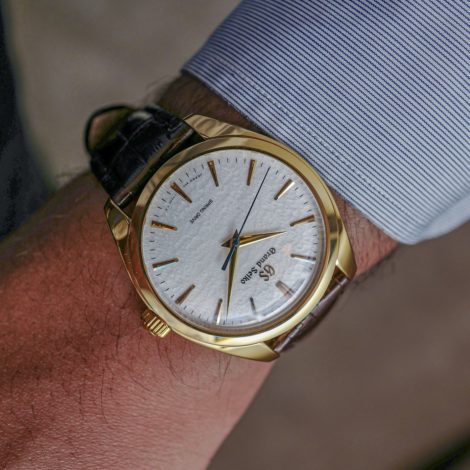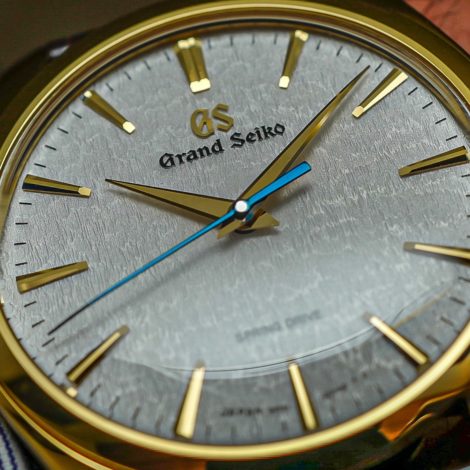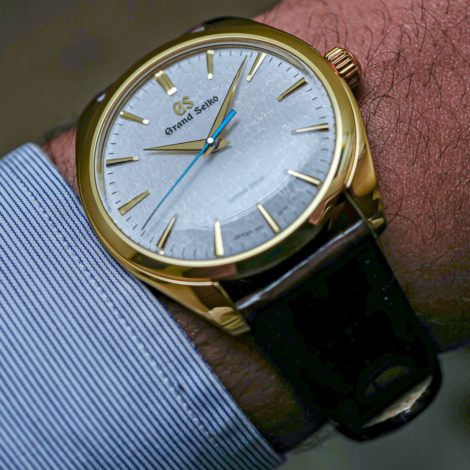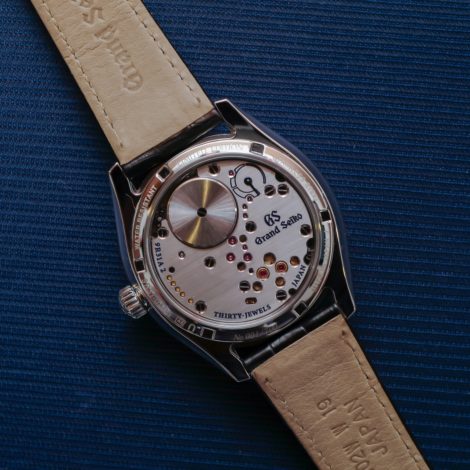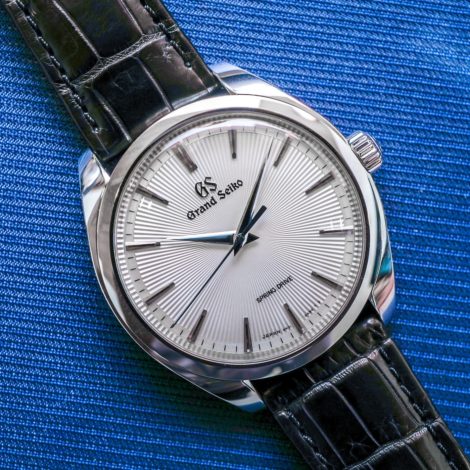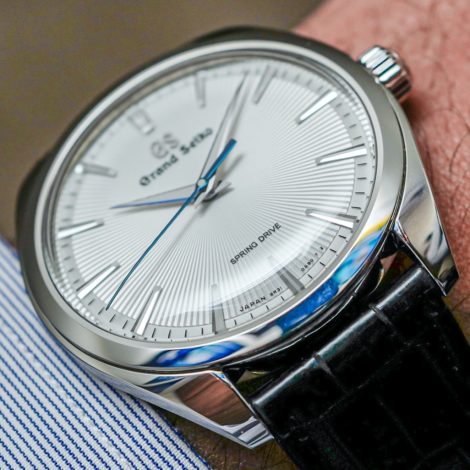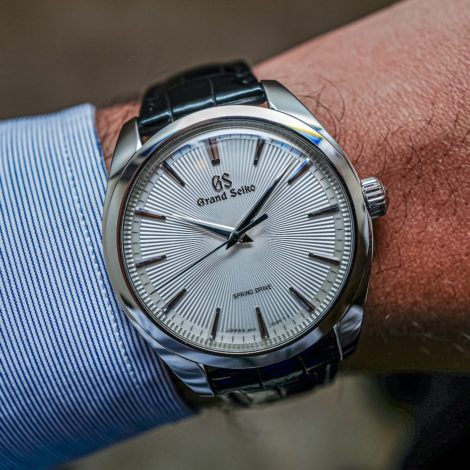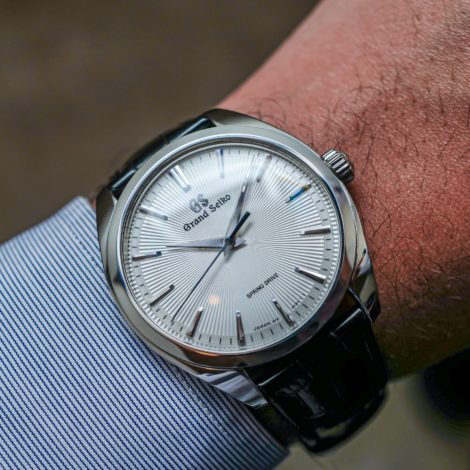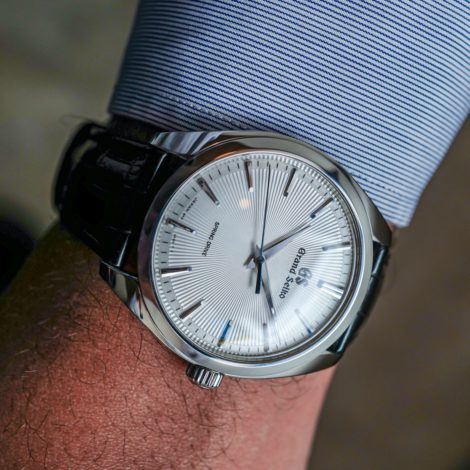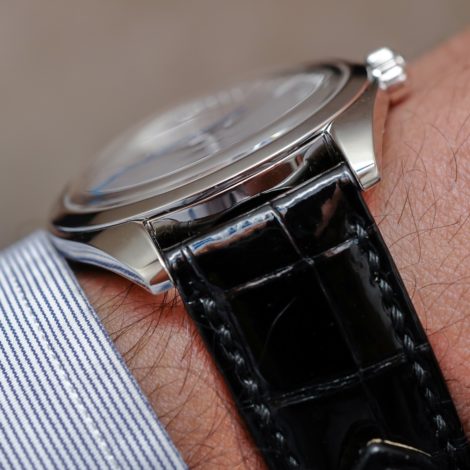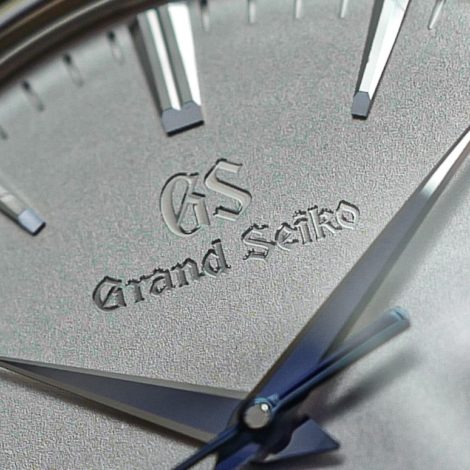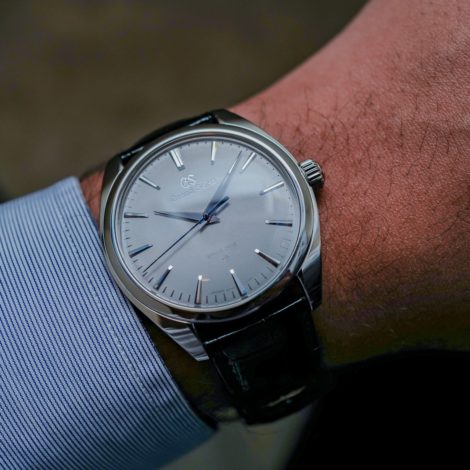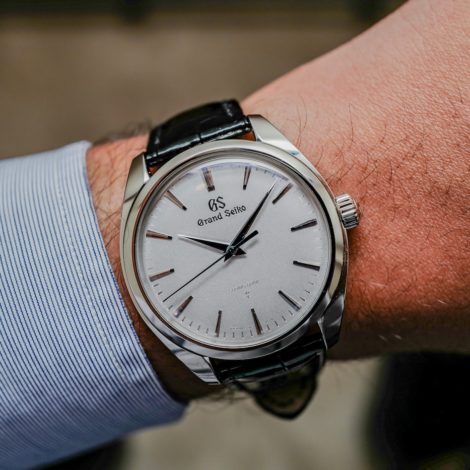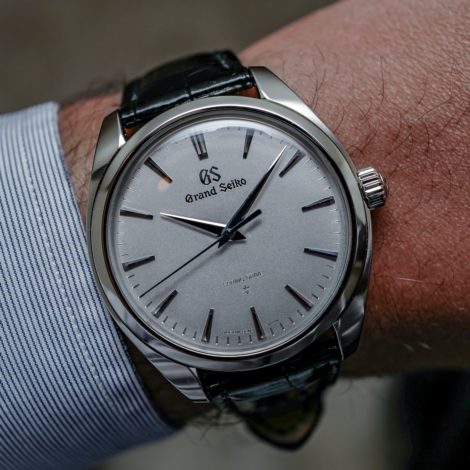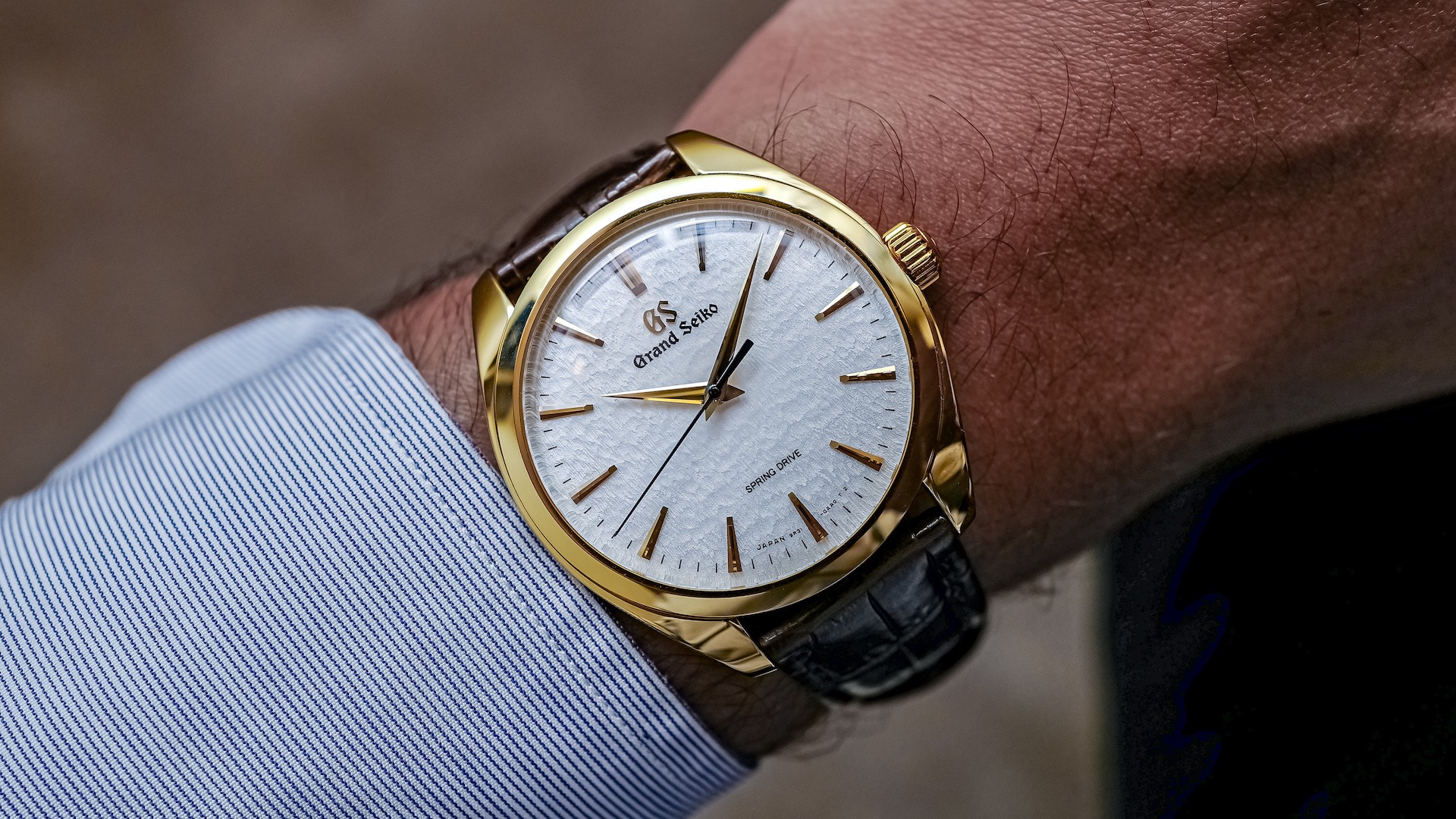
Over the course of the past 20 short years, the Seiko Spring Drive movement has become embedded in the watch collector and enthusiast vernacular. At this point, countless words have been dedicated to discussing the Spring Drive movement, but if you want a truly in-depth explanation of the mechanism, as well as a thorough history, then I recommend you read “The Amazing History & Functionality of the Seiko Spring Drive Movement,” as well as our interview with Grand Seiko master watchmaker Mr. Yoshifusa Nakazawa. Grand Seiko is telling the story of the Spring Drive over the course of nine chapters themselves, as well.
Ranging from a relatively reasonably priced (albeit limited edition) stainless steel version through 18k gold options all the way to the $76,000 platinum SBGZ001, Grand Seiko has launched a new collection called Grand Seiko Elegance Spring Drive 20th Anniversary collection.
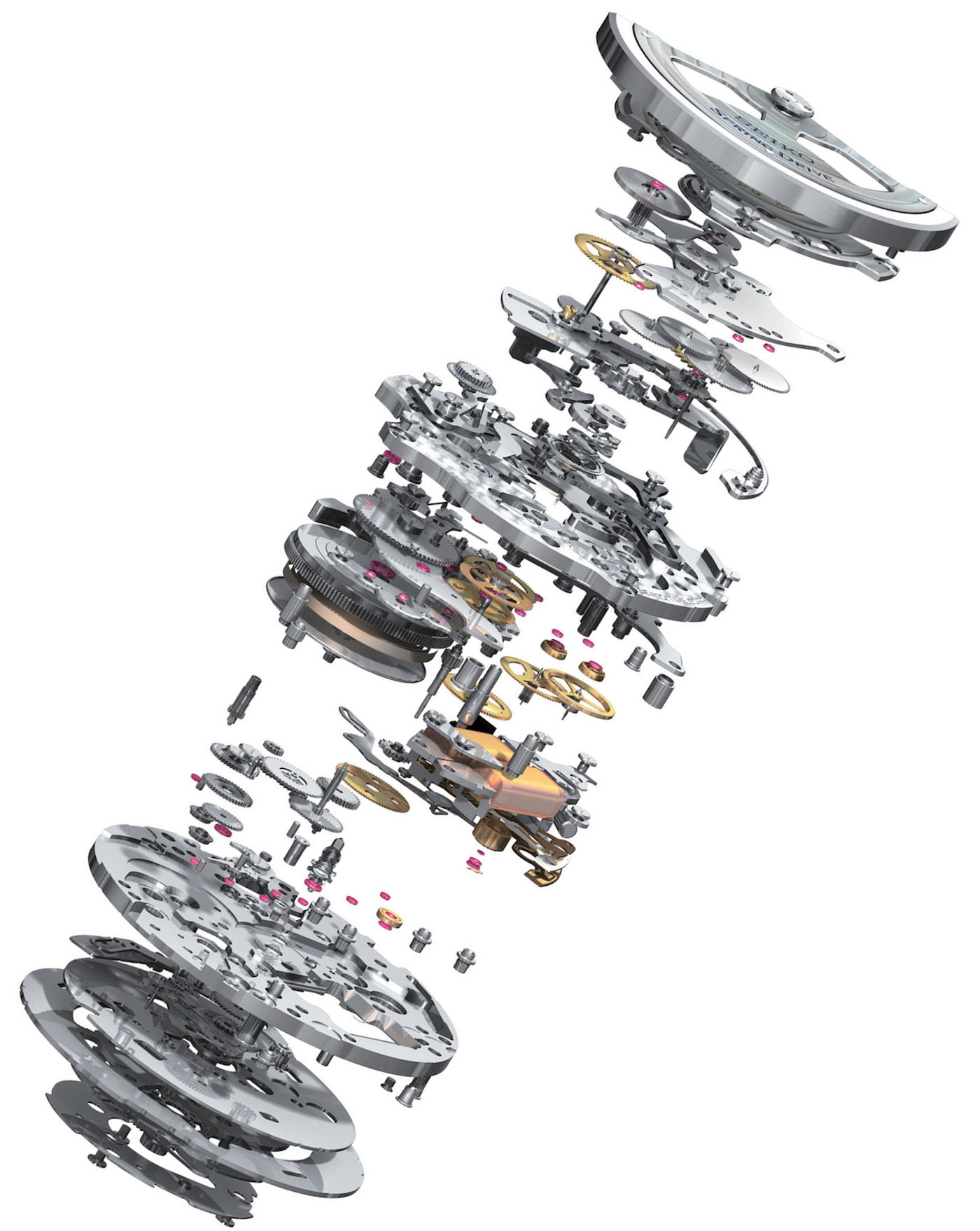
The Spring Drive movement was the dream of Yoshikazu Akahane in the late 1970s, when he was still an engineer at Suwa Seikosha, which would later become Seiko Epson. Along with contemporaries like Osamu Takahashi and Kunio Koike, Akahane would work for years to execute the project. In fact, he had already patented it, describing it as the “development of an electronically regulated mechanical watch that is powered by a spring.”
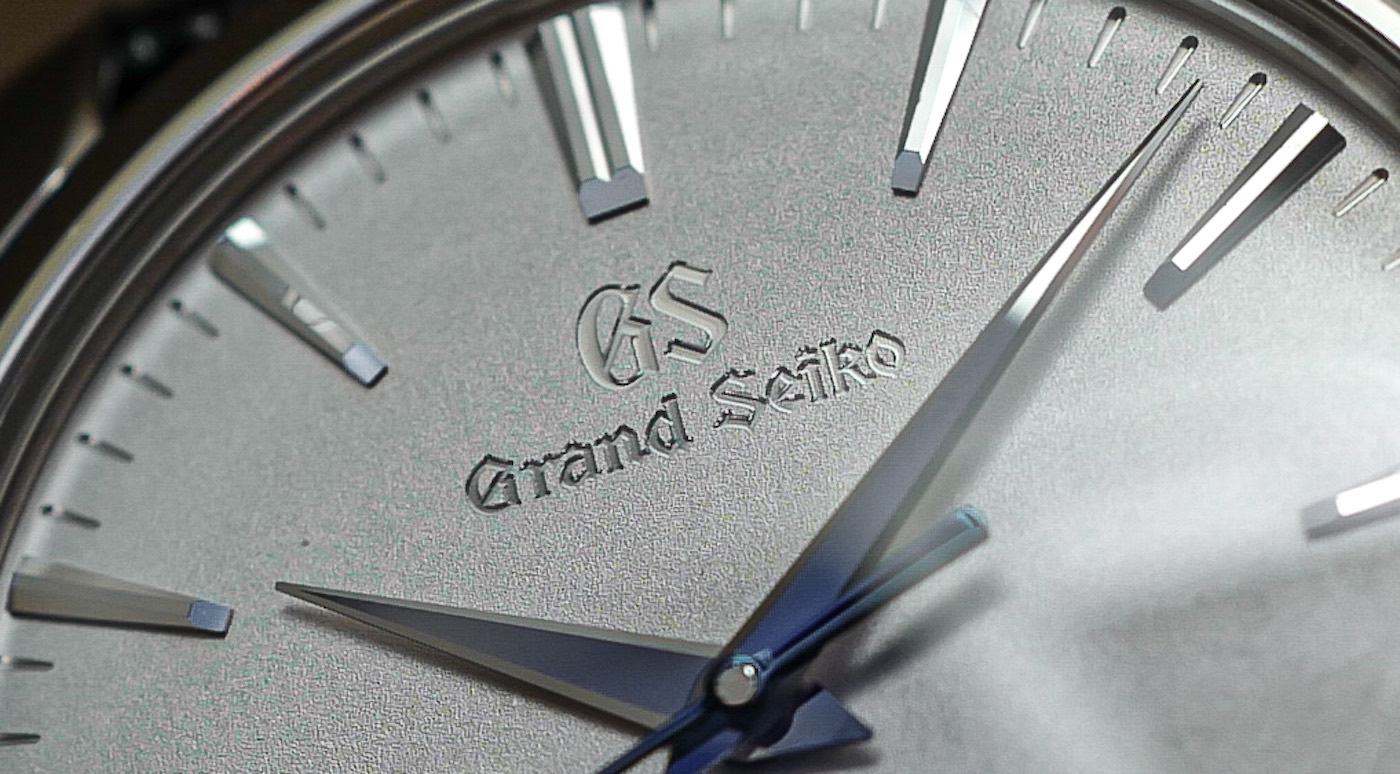
Mr. Takahashi was pivotal in the eventual signature Spring Drive sweeping seconds hand, and Koike had a large hand in the design of the low-voltage integrated circuit design which helped solve the long-lasting problem of reducing the power necessary to operate the movement. Akahane, Takahashi, and Koike were three seminal figures whose grit and relentless dedication made the Spring Drive a reality when it was first successfully used in a prototype on December 26, 1997. Tragically, Akahane would pass away from pneumonia less than a year later in August 1998.
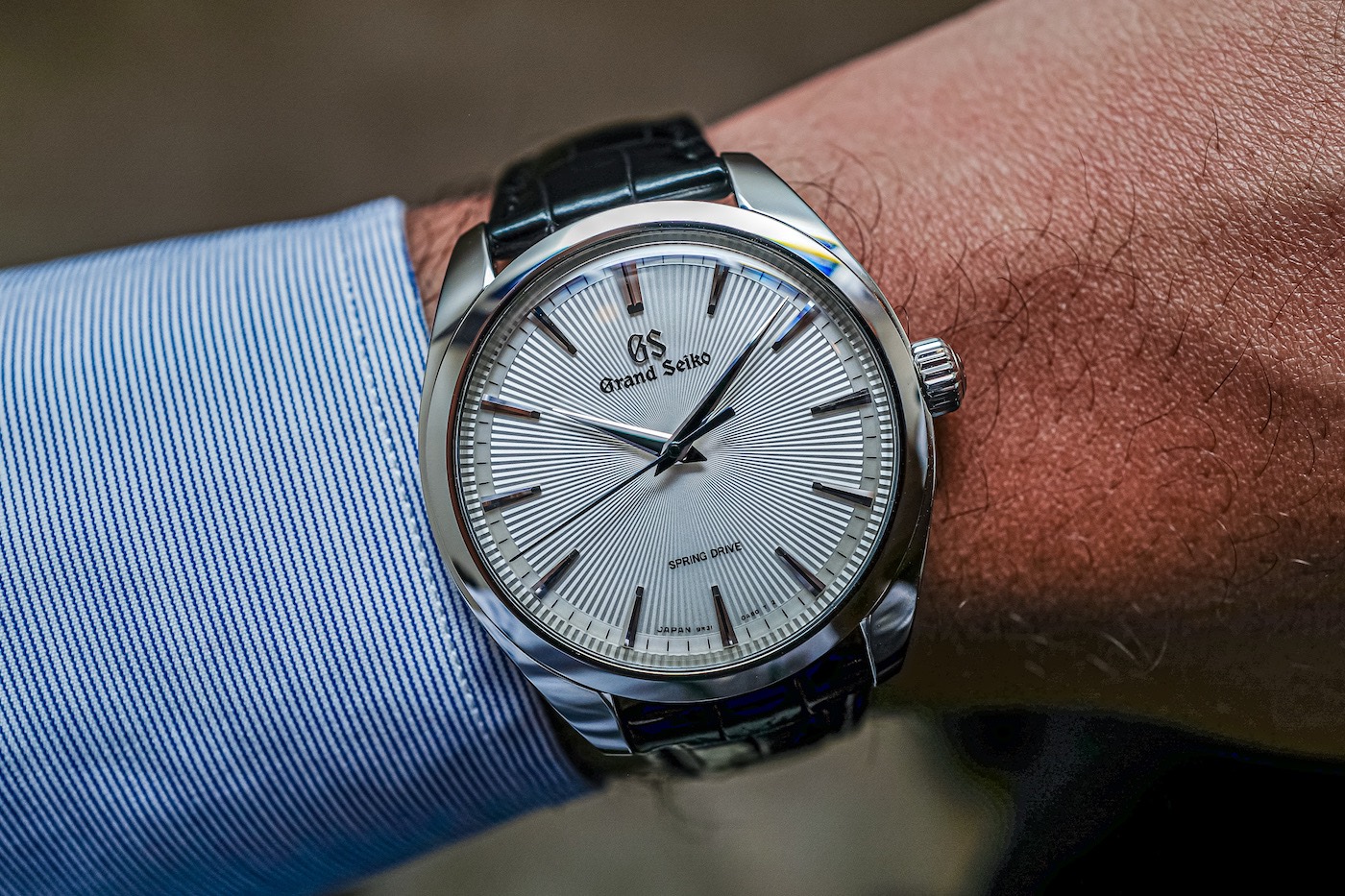
It’s been 20 years since the Spring Drive was announced which is ironically the same amount of time between the first patent filed in 1978 and the movement’s announcement in 1998. It took 600 patents and an endless well of human talent and ingenuity to create the Spring Drive movement. Released as a manual wind movement in 1999, the first automatic Spring Drive would come a few years later in 2005.
To mark the 20th anniversary of Spring Drive, Grand Seiko released four new watches as part of its Elegance Collection. Since this the 20th anniversary of the Spring Drive, it’s also technically the anniversary of the first manual-wind Spring Drive. So, Grand Seiko introduced two new manual-wind Spring Drive movements for this collection of four watches. Even so, all four watches have the same minimalist dial time-only dial layout. Well, almost the same layout. You’ll notice the platinum versions that use the caliber 9R02 have a small bellflower shaped barrel on the movement. The bellflower is an ode to Shiojiri, where the Seiko Micro Artist Studio is located. Also, at 6 o’clock on the dial, you’ll see the eight-point star that indicates that the hour markers are done in solid gold.
The new caliber 9R02 is the handiwork of the most veteran Seiko watchmakers at the Micro Artist Studio, and so it shouldn’t be surprising that both watches featuring this movement are done in platinum cases. In fact, the 9R02 is very similar to the Credor 7R14 found in the Eichi II but with a longer power reserve.
This movement features the “Torque Return System,” which essentially uses some of the energy put out by a fully wound mainspring that would otherwise be wasted. Activated 48 hours after the mainspring is fully wound, the Torque Return System adds to the movement’s power reserve. This results in the 9R02 having an 84-hour power reserve with an accuracy of ±1 second per day/ ±15 seconds per month.
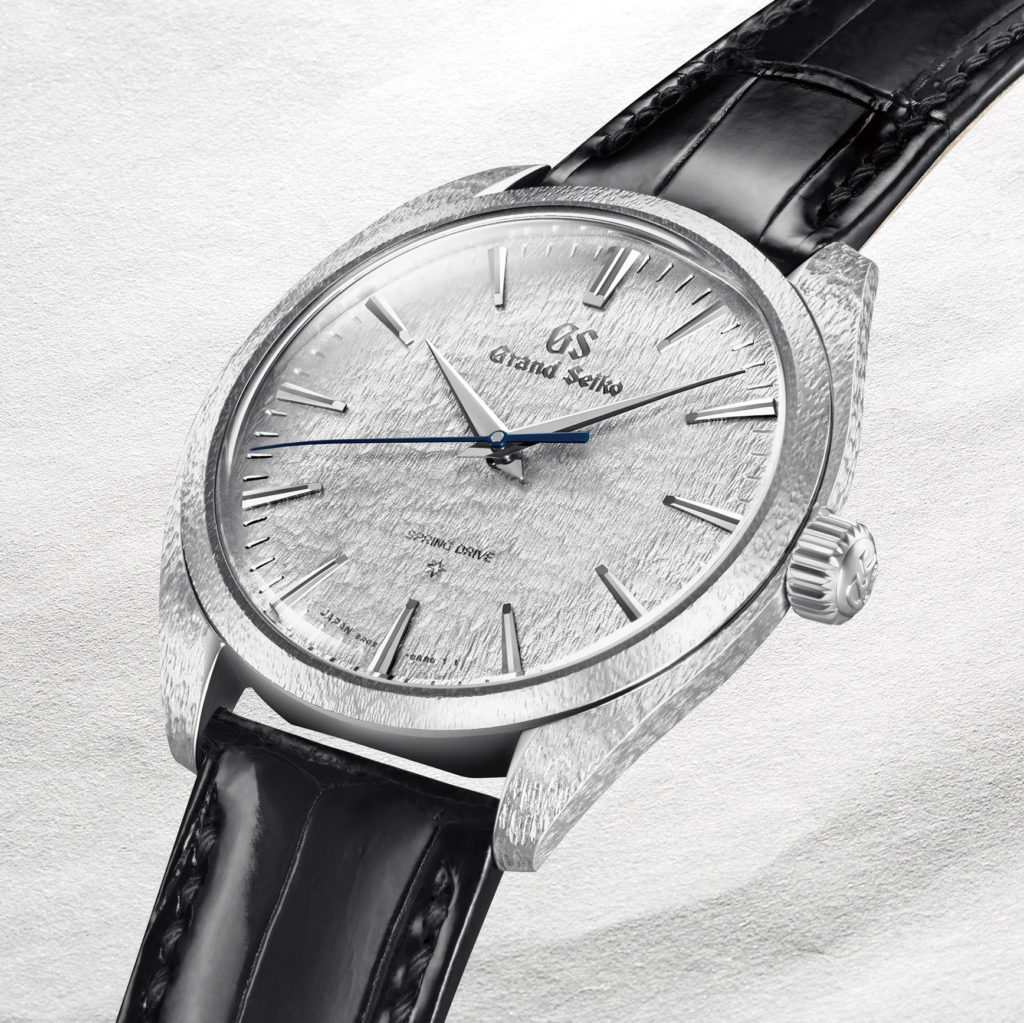
The model I wasn’t able to get photos of is the SBGZ001, which is done in a platinum case that is hand-finished in that recognizable Grand Seiko “snowflake” pattern that’s carried through on the dial. The SBGZ003 is the other platinum-case Grand Seiko Spring Drive 20th anniversary watch that utilizes the 9R02 movement and both have the same dimensions of 38.5mm-wide and 9.8mm-thick.
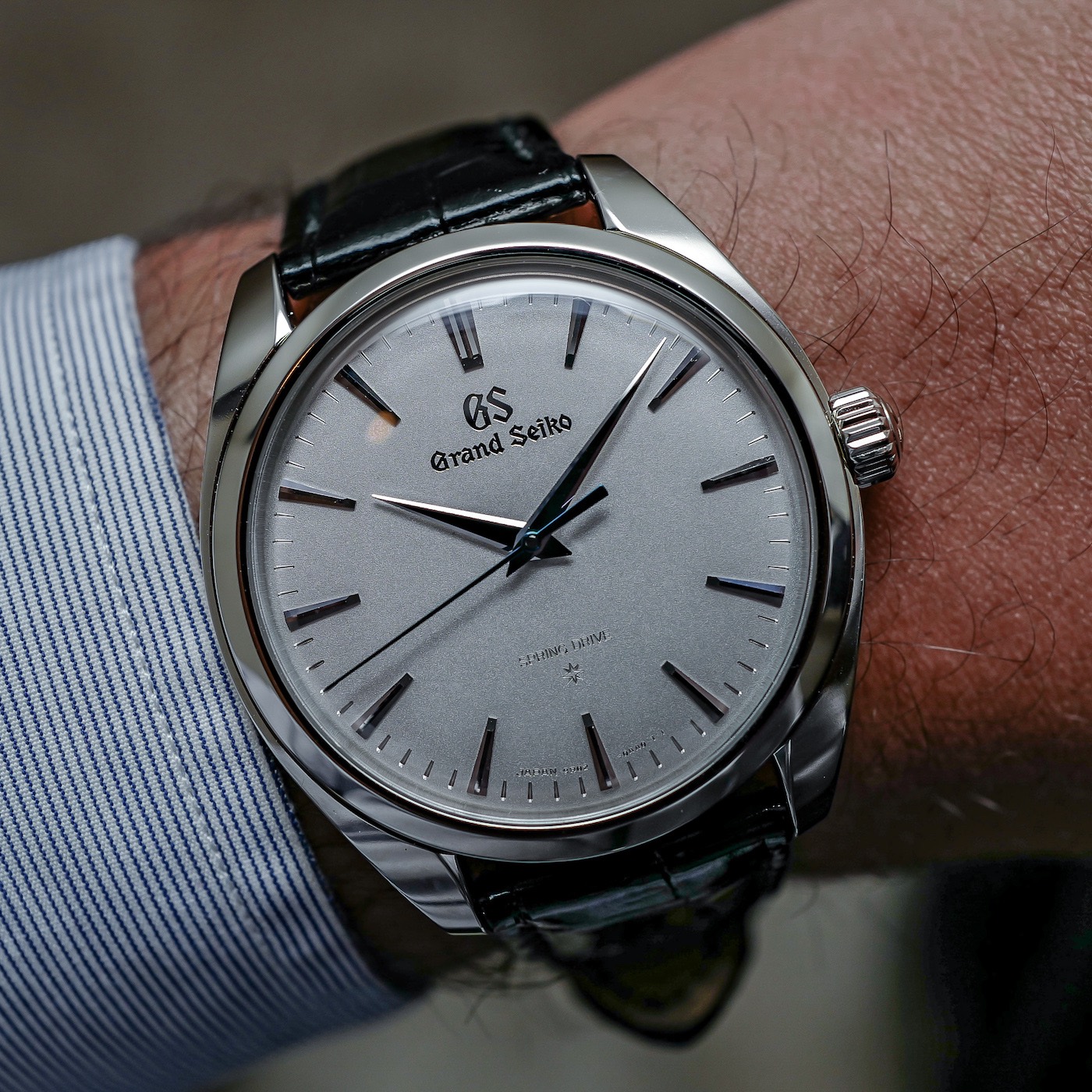
The primary difference between the two is the snowflake finishing on the dial and case of the SBGZ001, while the SBGZ003 has a more traditional case and grained dial. Both the SBGZ001 and SBGZ003 share the same case size, measuring 38.5mm-wide and 9.8mm-thick, though the snowflake-cased SBGZ001 is limited to 30 pieces, whereas the SBGZ003 isn’t limited.
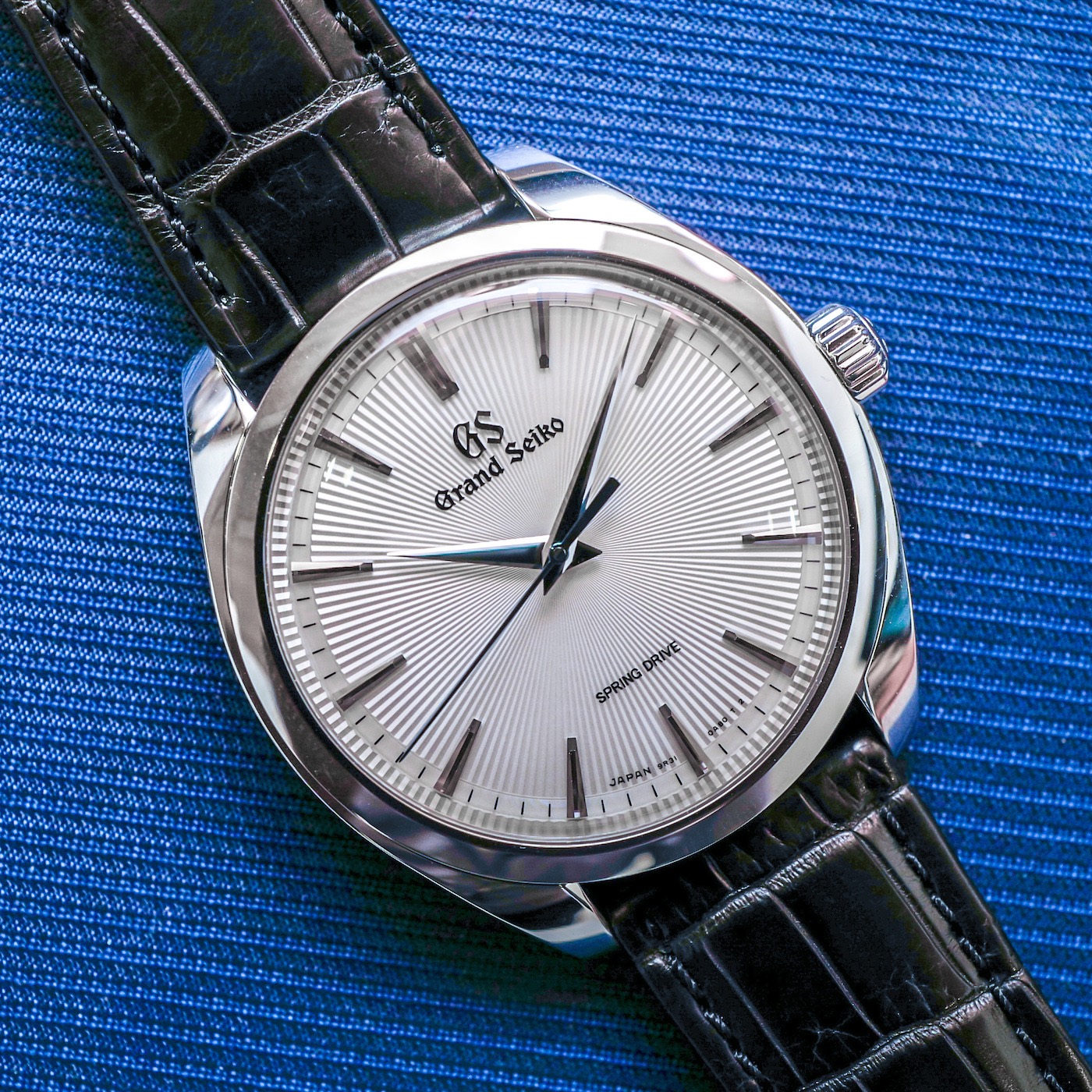
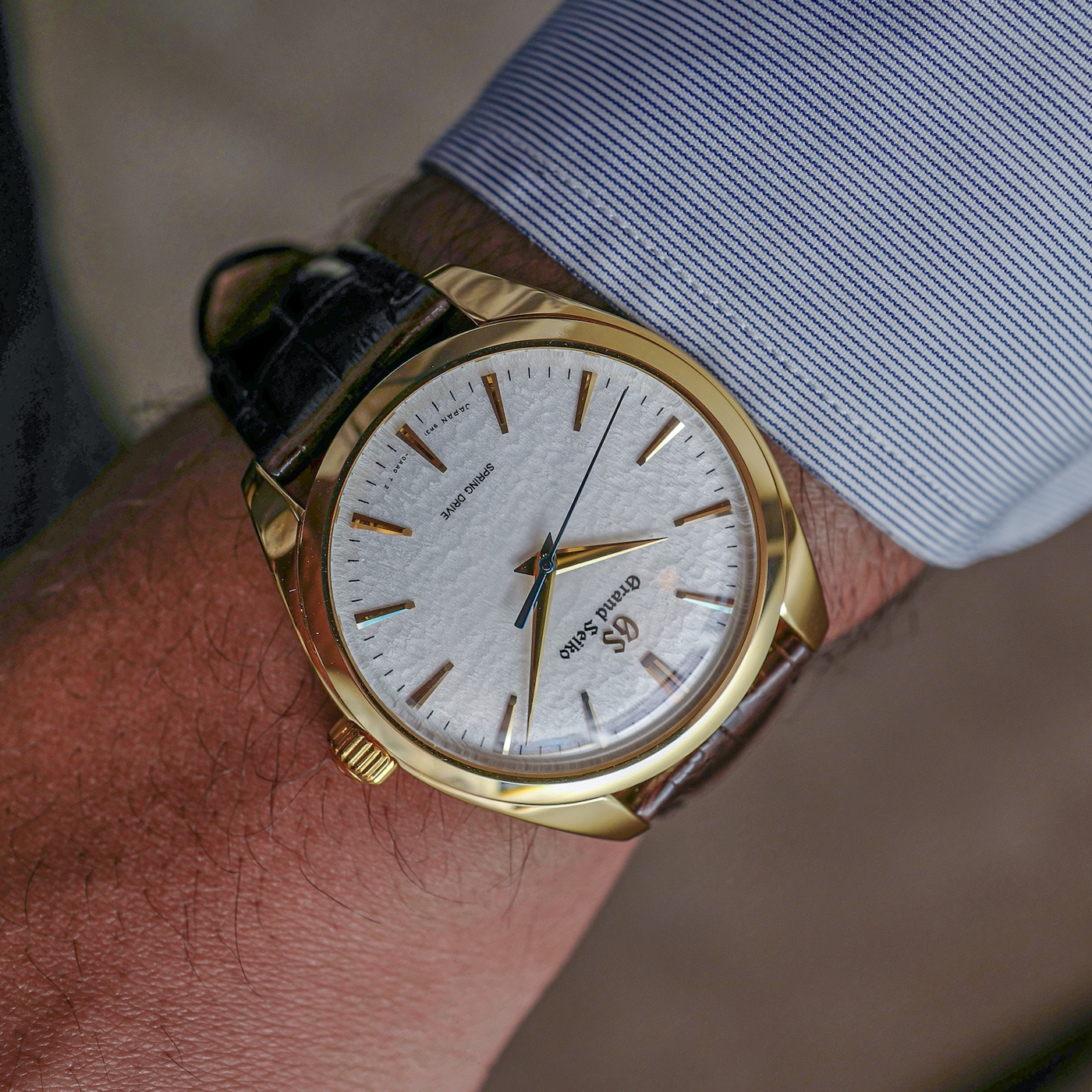
Now we have the SBGY002 and SBGY003, which features the new Spring Drive caliber 9R31 movement. The SBGY002 is the only yellow gold model of the bunch, and the limited edition of 700 pieces (SBGY003) is the most affordable watch in the group, as it’s done in stainless steel.
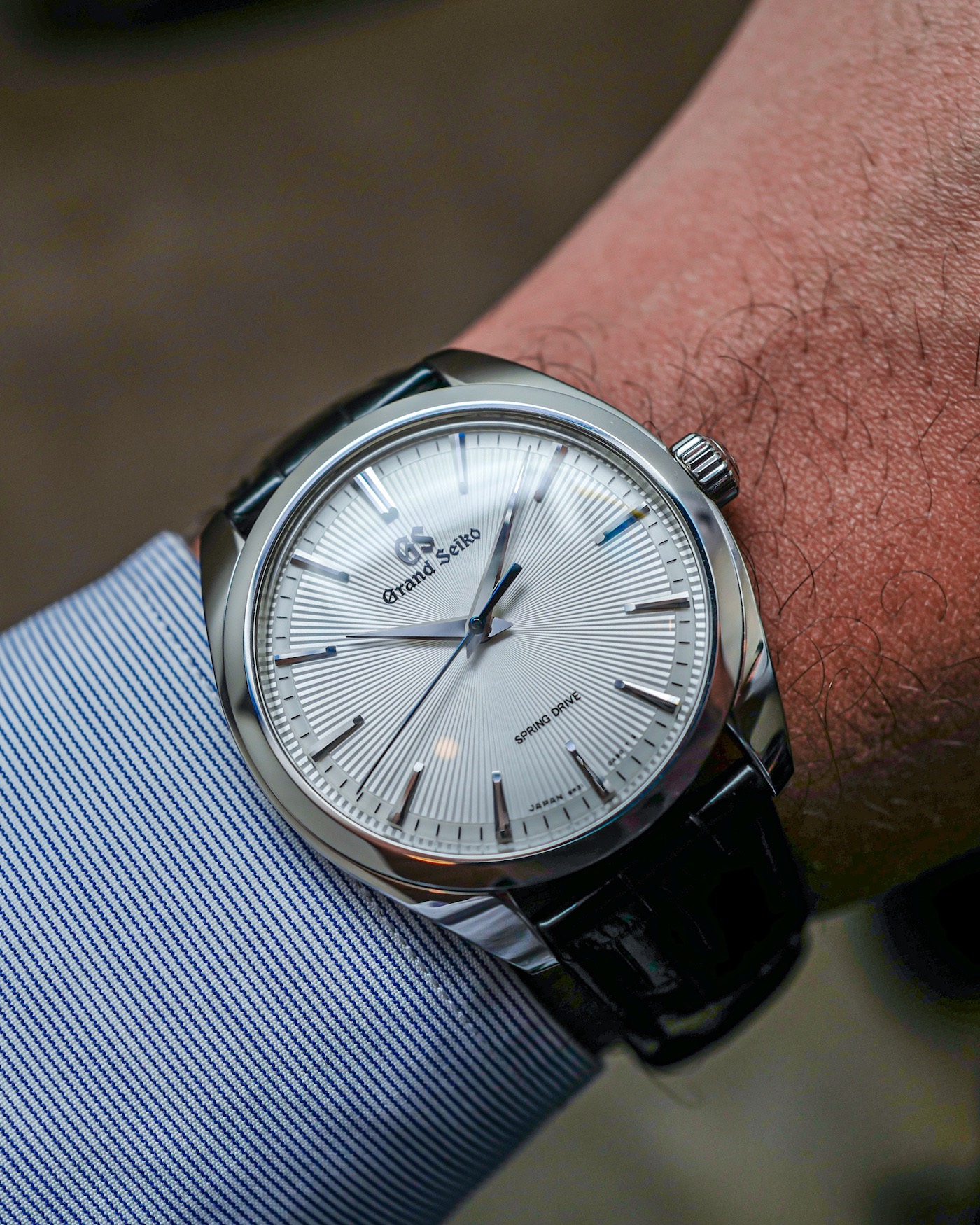
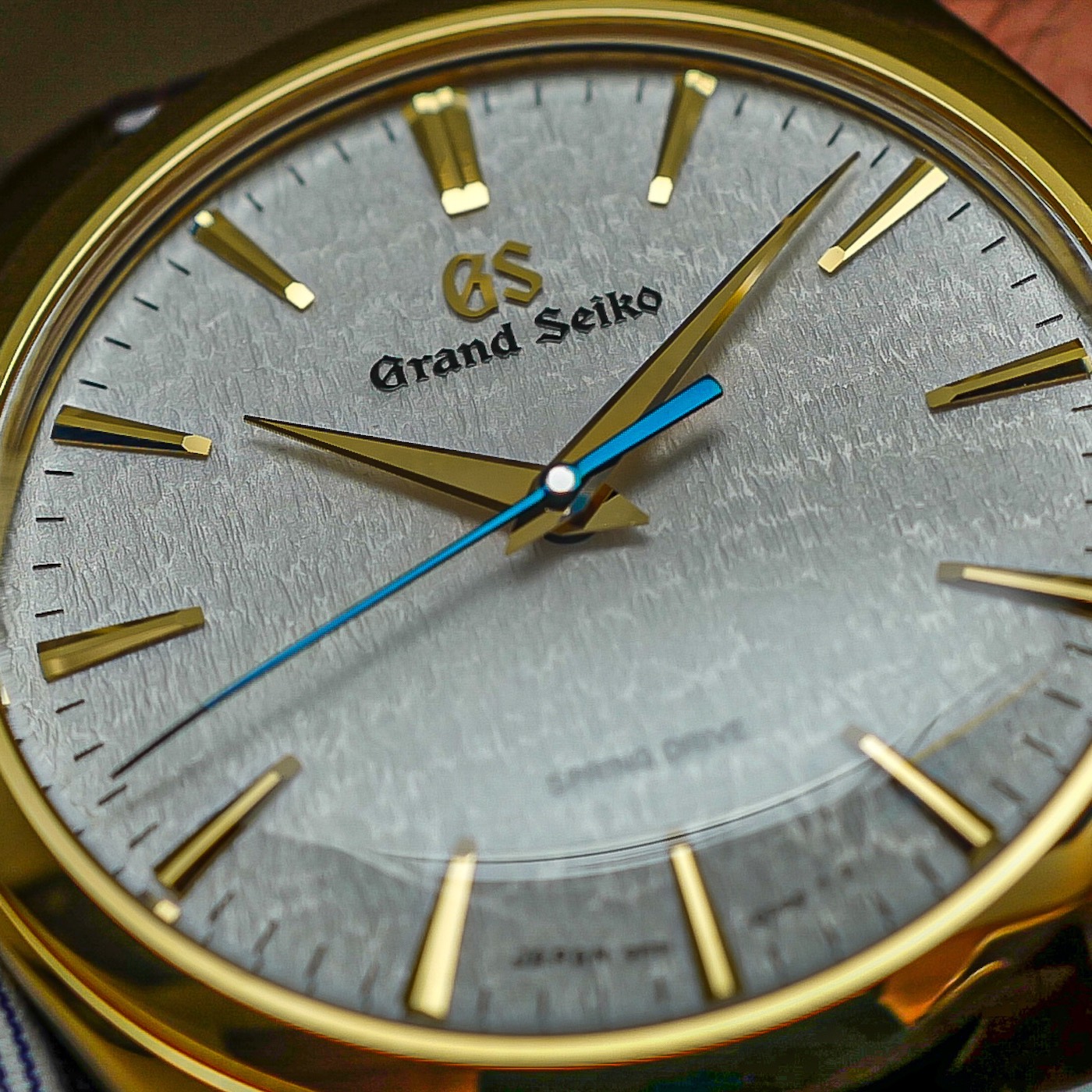
When looked at in relation to the two platinum watches, these two models represent the more accessible end of where Grand Seiko sees their Elegance Collection going. The SBGY002 is a “checks all the boxes” piece for someone who wants a gold watch that announces it’s a gold watch. I believe this is the first snowflake dial Grand Seiko has done in a yellow gold case, and I think the decision to use such a vibrant yellow gold over something like rose gold was wise and pays off. I imagine this version is especially going to be a hit at home in Japan for Grand Seiko, and keeping this as a non-limited-edition is smart.
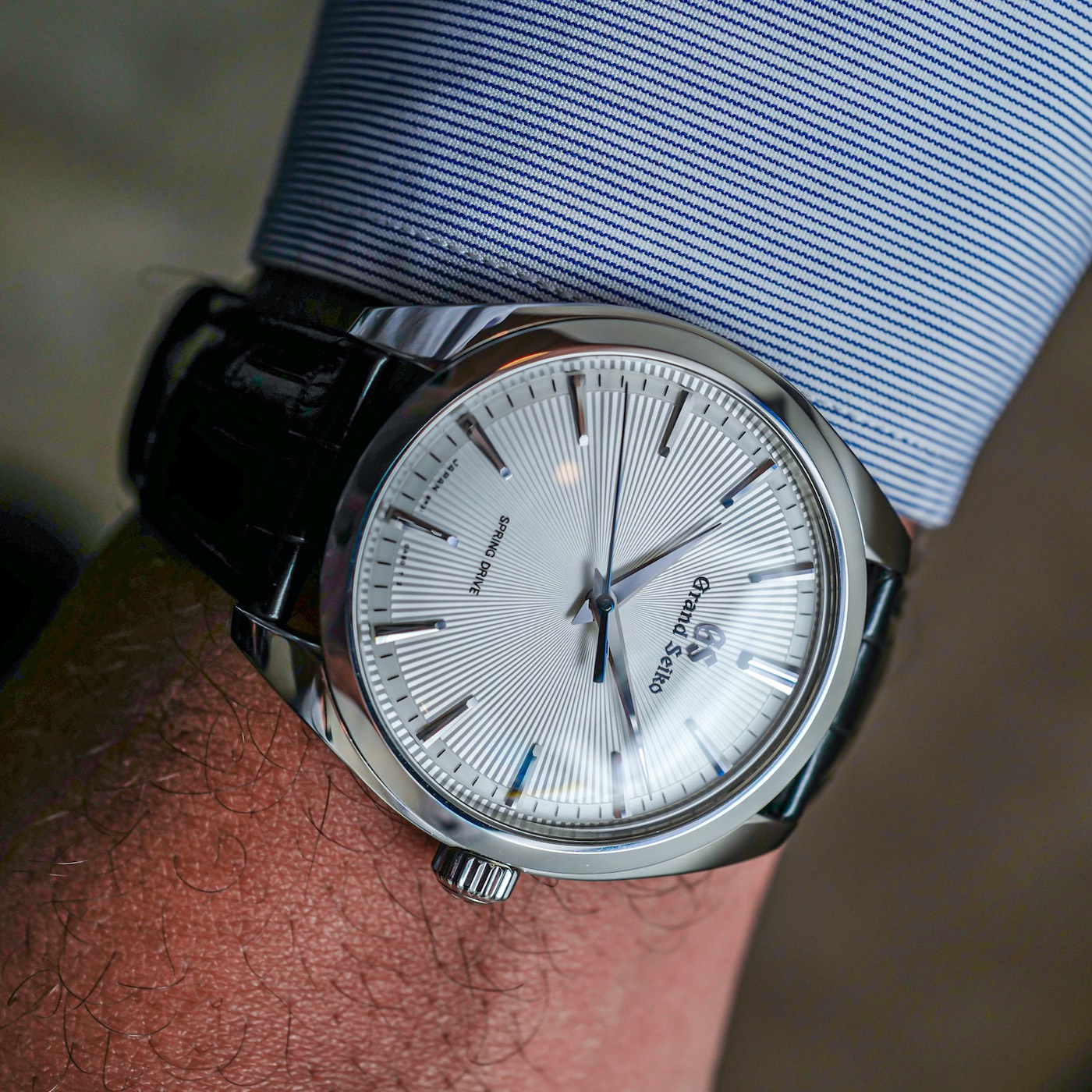
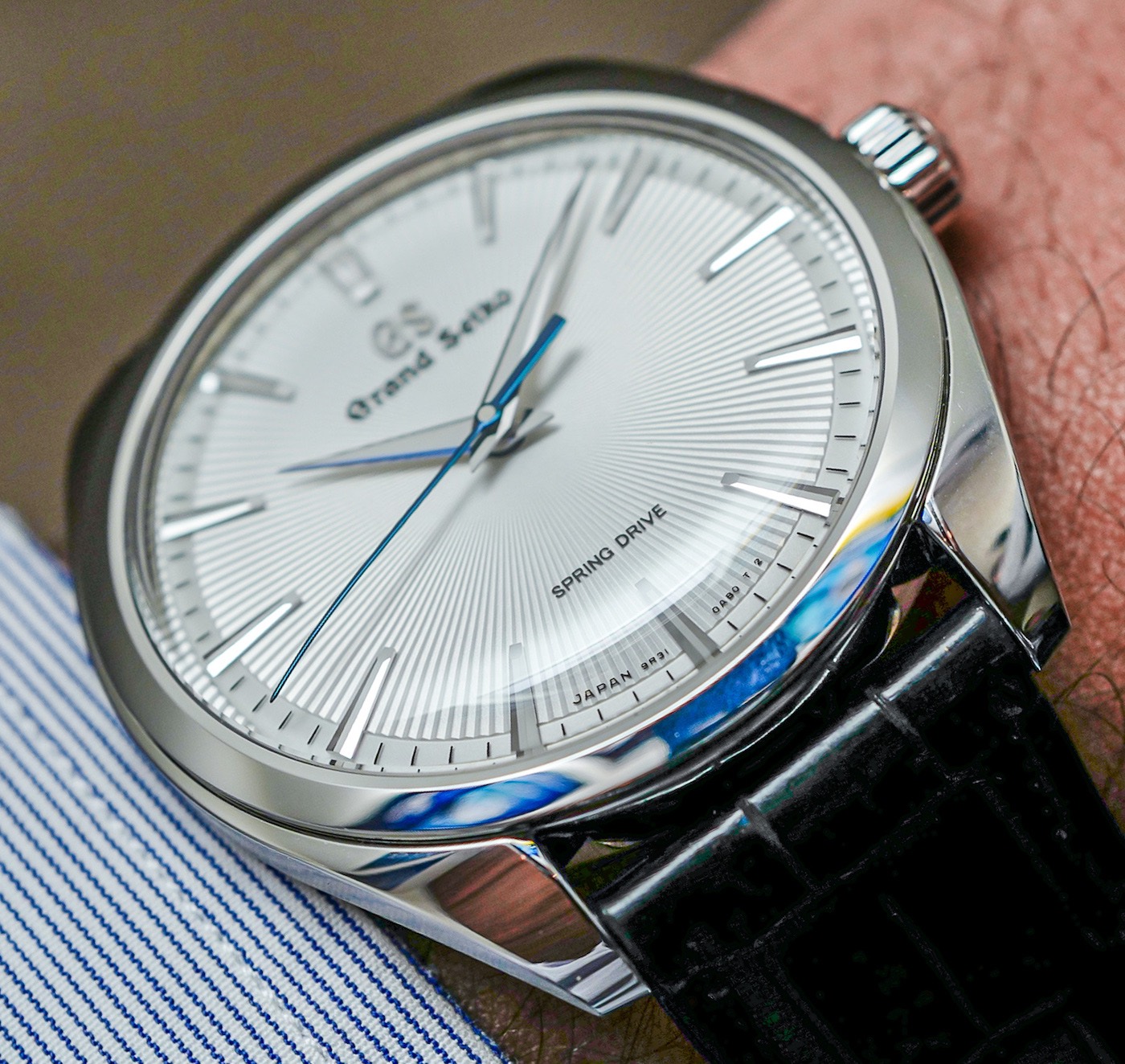
Now, the steel SBGY003 is a different story. It’s limited to 700 pieces with a sunray pattern that seizes one’s attention through its meticulous and detailed execution. I know how coveted the snowflake dial has become (and with good reason), but I think I actually prefer this sunray dial. I can’t help but see the snowflake dial as the Grand Seiko right brain (creative, artistic, poetic) and this sun-ray dial as the Grand Seiko left brain (logical, precisely sequenced, nearly mathematically intentional). That said, my opinion on which I prefer could change, depending on the kind of day I’m having.

The 9R31 shares the same dual mainspring architecture and ±1 second per day accuracy as the 9R02, though there are differences. The power reserve is shorter at 72 hours, and there is no Torque Return System or that bellflower design on the barrel. Both the 9R02 and the 9R31 have the power reserve indicators at the back of the dial on the movement.
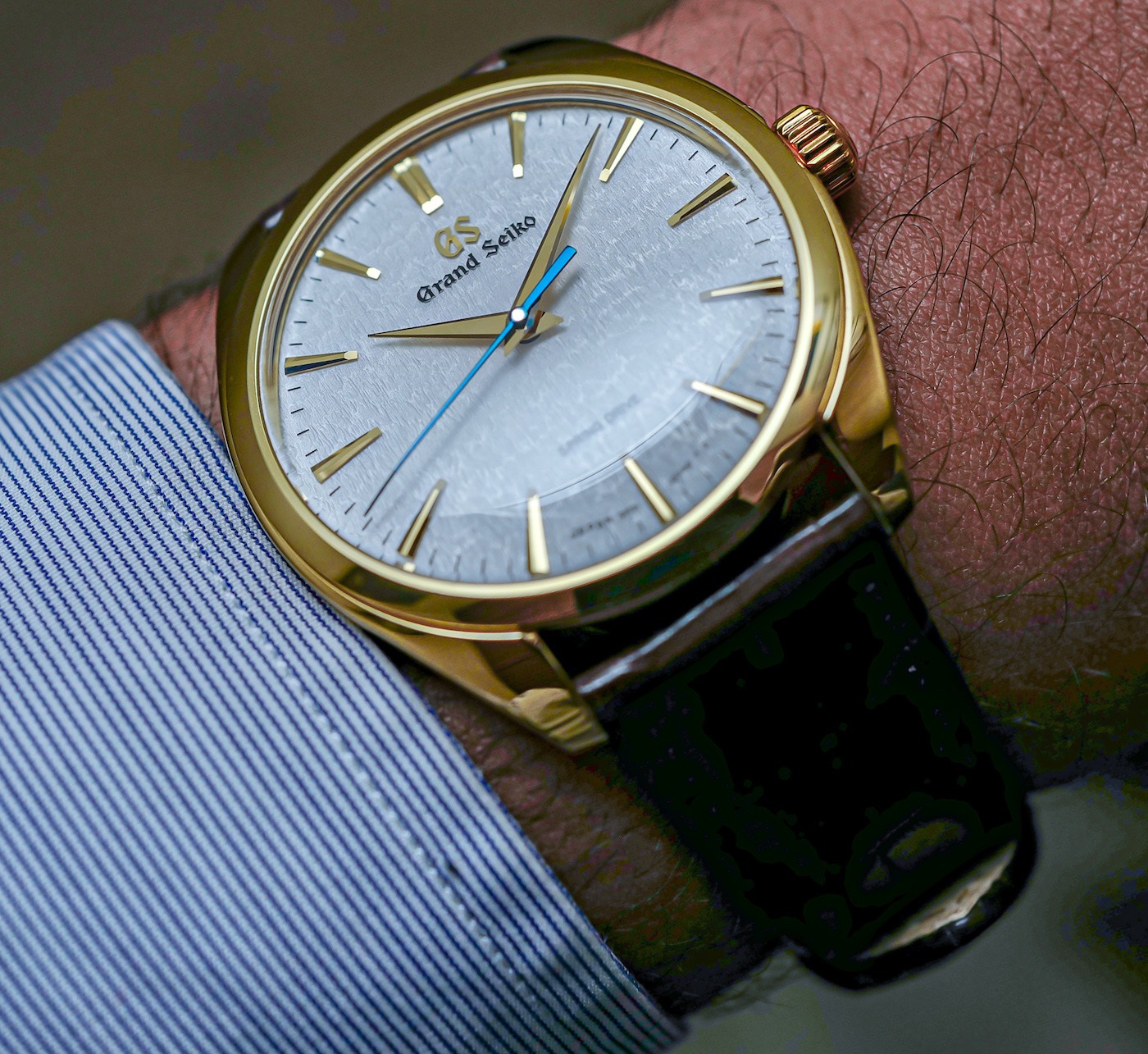
The Grand Seiko Elegance SBGZ001 in platinum with the snowflake dial and case is limited to 30 pieces and priced at $76,000, and I believe all are already spoken for, though the SBGZ003 in platinum isn’t a limited reference and is priced at $57,000. The limited edition of 700 pieces SBGY003 in steel is priced at $7,600 and the SBGY002 in yellow gold is priced at $25,000. You can learn more at grand-seiko.com.

